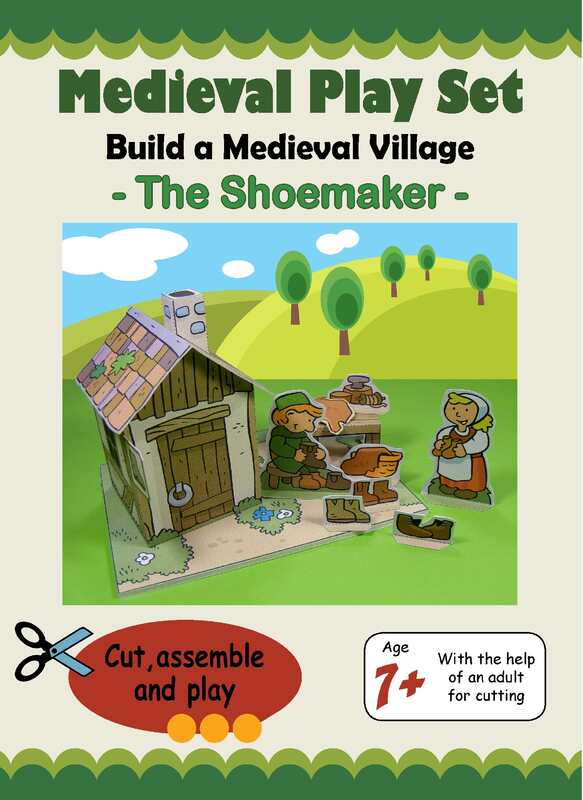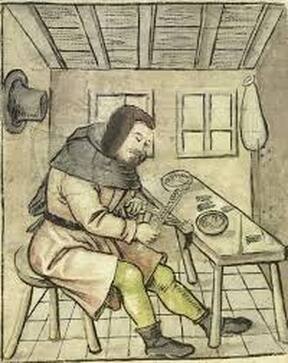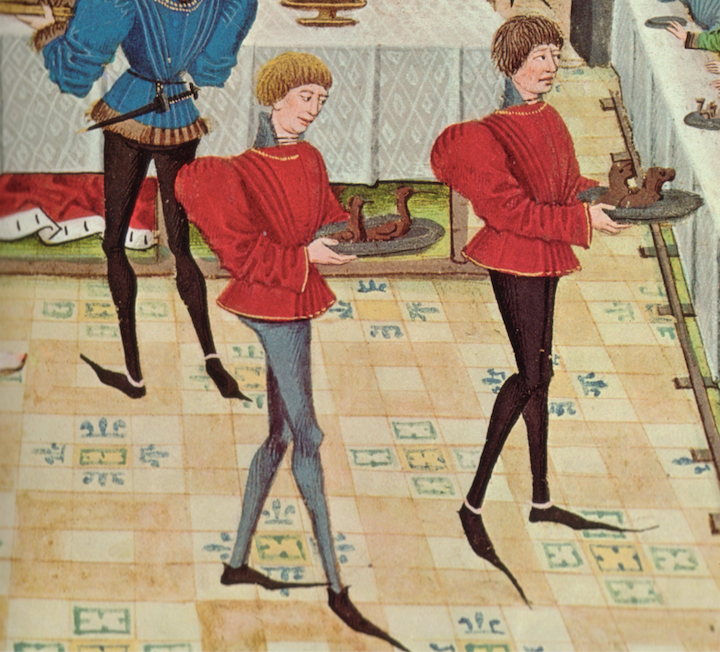Build a lovely French medieval village with these cut out figures and scenery. With this set, you can assemble the shoemaker house with its table and tools to make the shoes, and his family, as well as a few other accessories to enhance your scenery.
This set includes all the cut out figures shown in the photo, both in color as well as a copy in black and white for the children to color.
A fun project to build together as a family. With this set are detailed instructions on how to cut and assemble your play set. The figures are easy to cut and glue. All you will need are scissors and a glue stick. Print out the cut out figures on card-stock paper or heavier paper, 160 gr (recommended). The figures of the people are about 5 centimeter and a half high.
This set includes all the cut out figures shown in the photo, both in color as well as a copy in black and white for the children to color.
A fun project to build together as a family. With this set are detailed instructions on how to cut and assemble your play set. The figures are easy to cut and glue. All you will need are scissors and a glue stick. Print out the cut out figures on card-stock paper or heavier paper, 160 gr (recommended). The figures of the people are about 5 centimeter and a half high.
DOWNLOAD THIS SET AT MY ETSY SHOP HERE:
LIFE OF A shoemaker IN MEDIEVAL TIME
Shoemakers were often common laborers who made shoes. Within their local area, they could find the tools needed and the cowhide to be prepared for the shoe leather or get it from the tanner.
A shoemaker would form the leather around a block of wood or metal that had been prepared in the shape of a foot, sew it together, and then nail the result to a sole.
A shoemaker would form the leather around a block of wood or metal that had been prepared in the shape of a foot, sew it together, and then nail the result to a sole.
Sometimes wood was used not only for the sole but for the entire shoe (also called “clogs”).
Sometimes for the rich, the uppers might have been made of fine cloths decorated with embroidery.
Sometimes for the rich, the uppers might have been made of fine cloths decorated with embroidery.
Read also about the medieval fashion for long pointy shoes:
www.atlasobscura.com/articles/medieval-europeans-pointy-shoes
www.atlasobscura.com/articles/medieval-europeans-pointy-shoes
You can look up more articles on the internet or at the public library. Also, if available, you can visit an archaeological site and museum.



